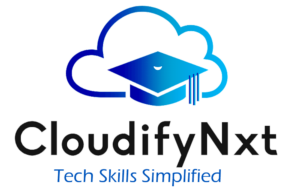
How to Switch Your Career to Data Science: A Step-by-Step Guide
Transitioning into a data science career is an exciting and strategic move that can open doors to high-paying and intellectually rewarding roles. Whether you’re coming from a non-technical background, IT, finance, or any other field, this comprehensive guide will walk you through the essential steps to make a successful career switch to data science.
Contents
- 1 🎯 Step 1: Understand the Role of a Data Scientist
- 2 🧠 Step 2: Assess Your Current Skill Set
- 3 📚 Step 3: Acquire Core Data Science Skills
- 4 🛠️ Step 4: Gain Practical Experience
- 5 📄 Step 5: Build an Impressive Portfolio
- 6 🤝 Step 6: Network with Industry Professionals
- 7 📝 Step 7: Tailor Your Resume and Apply for Jobs
- 8 🌱 Step 8: Continue Learning and Upskilling
🎯 Step 1: Understand the Role of a Data Scientist
Before diving into the technicalities, it’s crucial to grasp what a data scientist does. Data scientists analyze complex data to help organizations make informed decisions. They utilize statistical methods, machine learning algorithms, and data visualization techniques to interpret and present data insights.
🧠 Step 2: Assess Your Current Skill Set
Identify transferable skills from your previous roles that can aid in your transition:
-
Analytical Thinking: Problem-solving and critical thinking are core to data science.
-
Domain Knowledge: Understanding the industry you’re transitioning into can provide context to the data.
-
Technical Skills: Proficiency in tools like Excel, SQL, or basic programming can be advantageous.
Recognizing these strengths will help you focus on areas that need development.
📚 Step 3: Acquire Core Data Science Skills
To build a strong foundation in data science, focus on the following areas:
1. Programming Languages
-
Python: Widely used for data analysis and machine learning.
-
R: Preferred for statistical analysis and visualization.
-
SQL: Essential for database querying.
2. Statistics and Mathematics
-
Understanding probability, distributions, and statistical tests is vital.
3. Machine Learning
-
Learn algorithms like linear regression, decision trees, and clustering.
4. Data Visualization
-
Tools like Tableau, Power BI, or libraries like Matplotlib and Seaborn in Python.
5. Big Data Technologies
-
Familiarize yourself with Hadoop, Spark, and cloud platforms like AWS or Azure.
🛠️ Step 4: Gain Practical Experience
Hands-on experience is crucial in data science. Engage in the following activities:
-
Personal Projects: Analyze publicly available datasets to solve real-world problems.
-
Kaggle Competitions: Participate in challenges to apply your skills and learn from others.
-
Internships or Freelance Work: Seek opportunities to work on actual data problems.
-
Open-Source Contributions: Contribute to data science projects to build credibility.
Document your projects on platforms like GitHub to showcase your work to potential employers.
📄 Step 5: Build an Impressive Portfolio
A well-curated portfolio demonstrates your capabilities to prospective employers:
-
Diverse Projects: Include projects that showcase various skills, such as data cleaning, analysis, and visualization.
-
Clear Documentation: Provide detailed explanations of your methodologies and findings.
-
Professional Presentation: Ensure your portfolio is organized and accessible.
A strong portfolio can significantly enhance your employability in the data science field.
🤝 Step 6: Network with Industry Professionals
Building connections can open doors to job opportunities:
-
LinkedIn: Connect with data scientists and join relevant groups.
-
Meetups and Conferences: Attend events to learn and network.
-
Online Communities: Participate in forums like Reddit or Stack Overflow.
Networking can provide insights into the industry and help you stay updated with trends.
📝 Step 7: Tailor Your Resume and Apply for Jobs
When you’re ready to enter the job market:
-
Customize Your Resume: Highlight relevant skills, projects, and certifications.
-
Prepare for Interviews: Practice answering technical and behavioral questions.
-
Start with Entry-Level Roles: Consider positions like data analyst or junior data scientist to gain experience.
Persistence is key; continue learning and applying until you secure a position.
🌱 Step 8: Continue Learning and Upskilling
Data science is a rapidly evolving field; staying updated is essential:
-
Advanced Courses: Pursue specialized topics like deep learning or natural language processing.
-
Certifications: Obtain credentials from recognized platforms to validate your skills.
-
Stay Informed: Follow industry blogs, attend webinars, and read research papers.
Continuous learning will help you advance in your data science career.
